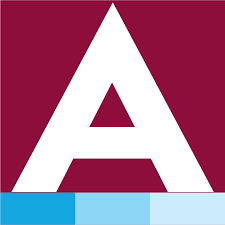Job interviews easily qualify as one of life’s more nerve wracking situations. Like it or not, you have to perform, and all eyes are on you. Your resume is prepared, your wardrobe is spot on, you’ve practiced deep breathing to steady the nerves – but have you taken inventory of your body language? Often times your nervous habits will betray your smooth outward appearance. Let’s take a look at a few key areas where a little awareness can result in a big boost in your appeal to prospective employers.
First Impressions
A prospective employer’s evaluation of you starts well before you get into the interview room. You never know who may be in the parking lot or sharing an elevator with you. Even if you are running late, don’t come skidding into the parking lot then begin tearing through your bag for a copy of your resume. Checking your lipstick in the elevator is taboo (unless you are alone!)
Receptionists are often asked for their impression of job applicants, so be confident and cordial when you step up to the desk. While you are waiting for the interviewer, sit with your profile toward the receptionist. That helps them feel comfortable, because you are not staring directly at them as they work, making them more likely to form a positive impression of you. While waiting in the lobby, try to sit facing the door the interviewer is likely to come through, if possible. This will make your greeting more fluid, instead of awkwardly whipping your head around when your name is called.
Be aware of your posture. Don’t slouch! Sit with your back straight and your chest open (no arms crossed). This posture makes you seem both aware and approachable. You want to exude confidence, not arrogance, so remember that this is not your living room – no feet on the coffee table, no lounging that makes you appear too comfortable. The watchword here is respect.
The Handshake
It may seem that the importance of the almighty handshake has been overdramatized, but don’t believe it. The manner in which you greet your interviewer is very important – it often sets the tone for the rest of the interview. You will be shaking with your right hand, so be prepared by shifting your possessions to your left hand. Offer your hand with the palm turned slightly up, so the interviewer’s hand covers yours completely as they grip. This is a very subtle indicator that you are giving them higher status. Two firm, quick shakes are all that is necessary. This relays confidence and efficiency. Make eye contact and smile as you repeat the person’s name, “It’s a pleasure to meet you, Mr. Gordon.”

The Interview
Try to sit directly facing your interviewer. The key here is to appear open and approachable. Avoid leaning forward, as this can be seen as either closed off or aggressive. Just like in the waiting area, sit with your back straight so your chest and neck areas are open. If you have a handbag or a jacket, umbrella, etc., place them on the floor beside you. Stacking these items on your lap can be interpreted as a defensive posture, as though you are hiding behind your belongings. If you have a portfolio that you will use during the interview, simply place it on the desk in front of you or on the adjacent chair if there is no room on the desk.
Hand Jive
Be especially aware of what you do with your hands. If you are an expressive speaker, that’s okay, as long as you keep movements above the desk and lower than your collarbone. Anything higher appears frenetic, but movement from the middle area is perceived as centered and controlled. Avoid pointing or using chopping motions, twirling the hair, tapping fingers or picking at anything! These movements are distracting for the interviewer and discount your credibility.
Shifty Eyes
Eye contact is the main point of connection between you and the interviewer, but how much is too much? You don’t want to stare – that’s aggressive, as well as creepy. You don’t want to look to the sides or upward too much, as that is perceived as being unsure or untruthful. Experts agree that an effective method to avoid staring or breaking eye contact too soon is to keep your gaze on the interviewer’s face; alternate between looking at the eyes, nose, and mouth. This method promotes the perception of interest and engagement.
Trying to remember all these points can seem as overwhelming as the interview itself, but there is one factor that helps overcome negative body language: be prepared. Have your resume in order, be able to speak about your skills, and know why you want to work at the company. Being prepared will give you the confidence to relax and be at your best!








